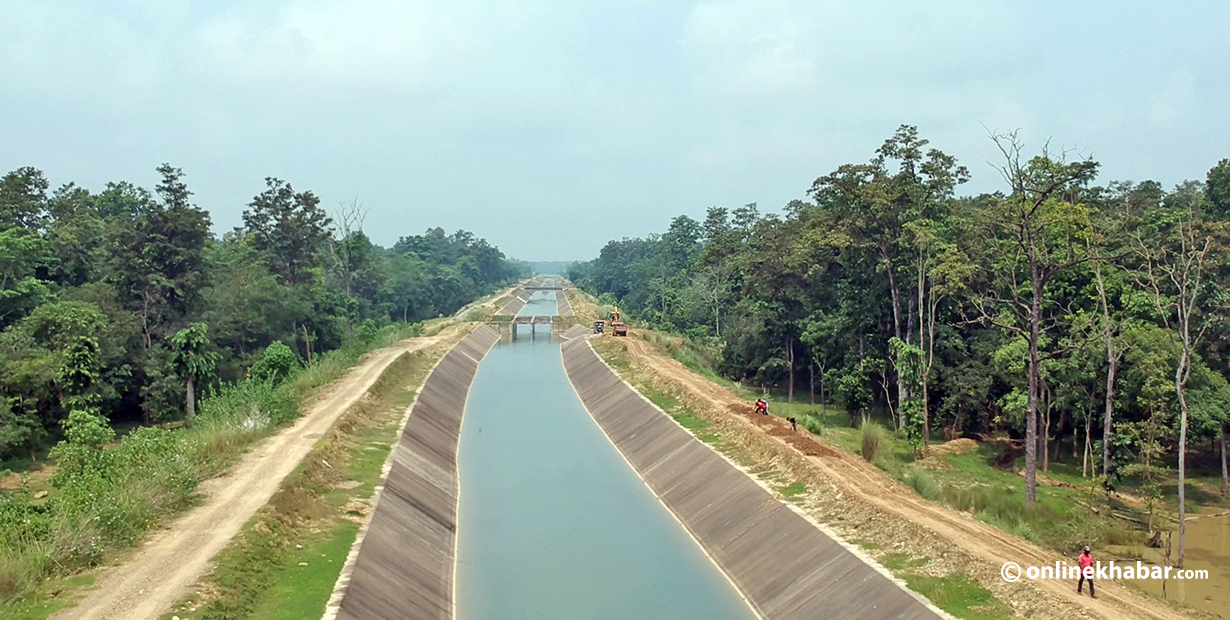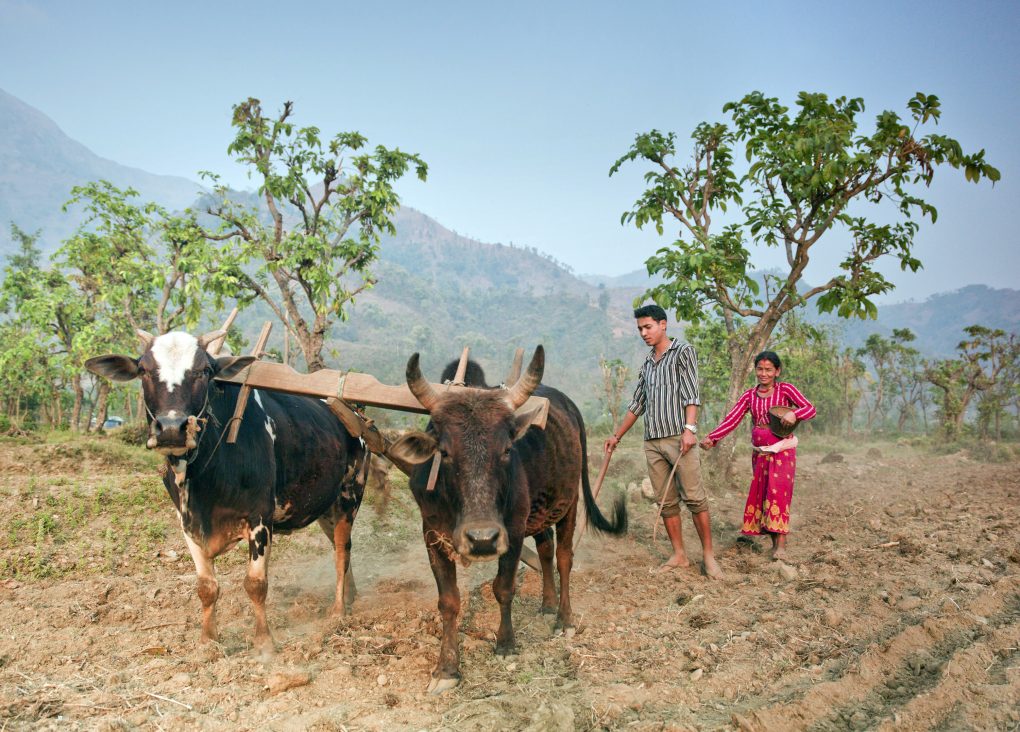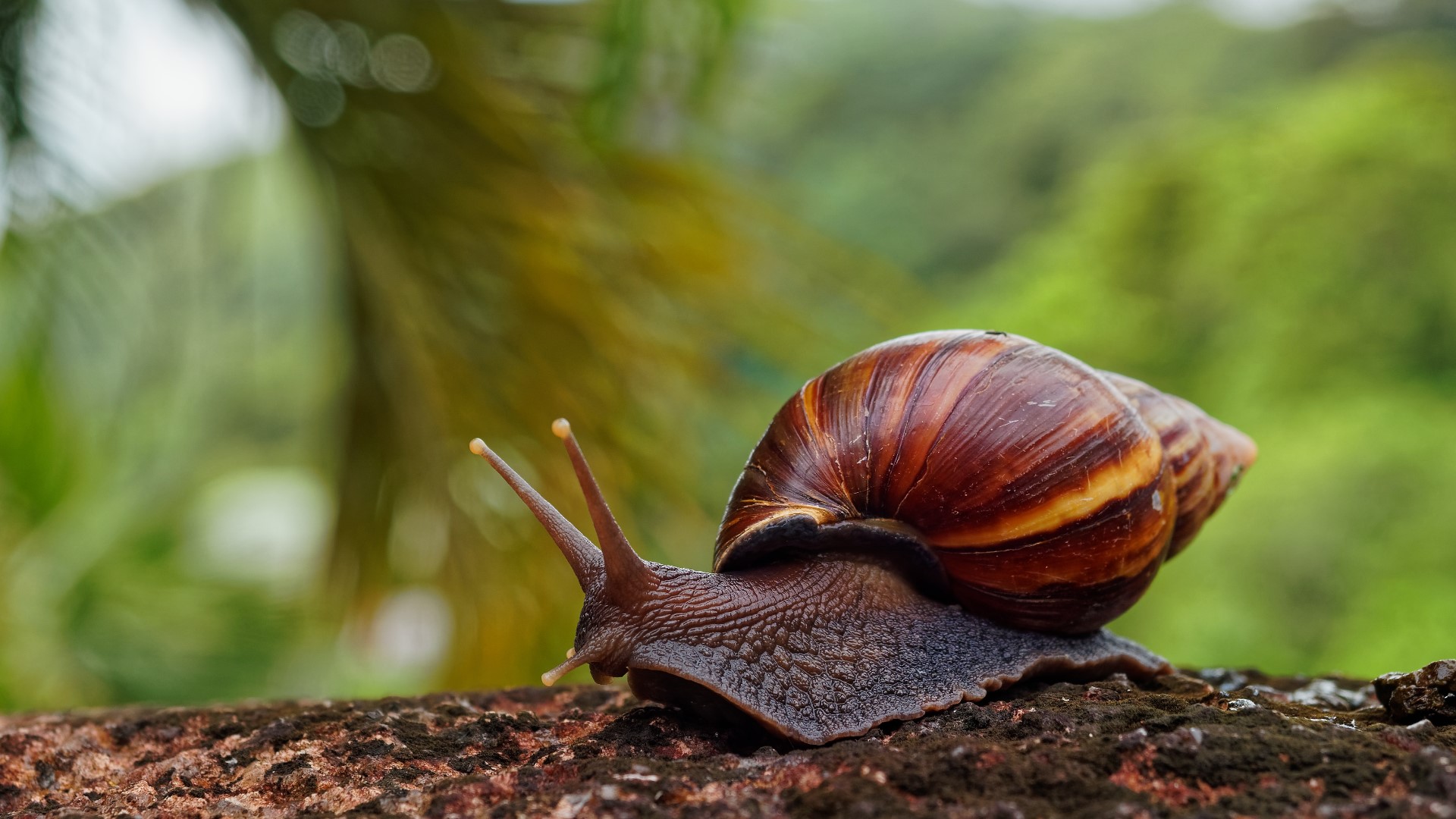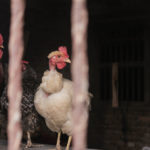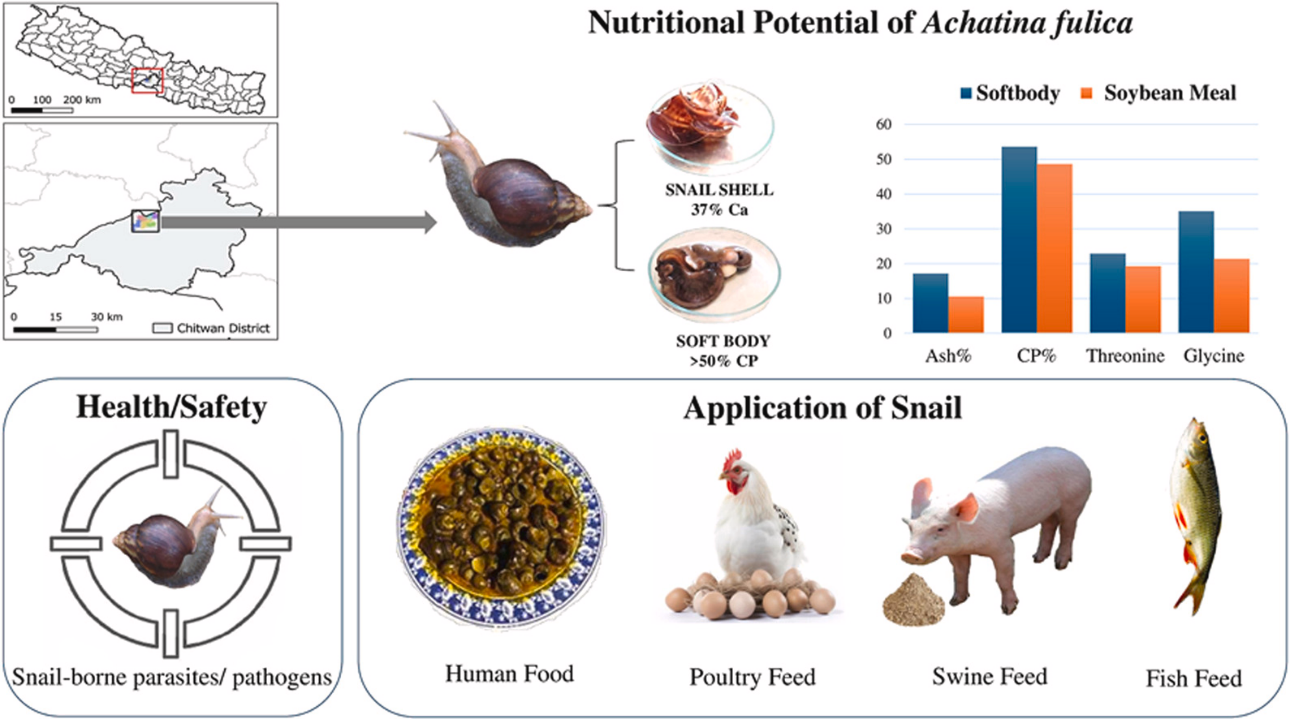
The image is taken from the same study by Patak et al.
As the world seeks sustainable solutions to feed a growing population amidst worsening food insecurity, an unlikely hero is emerging from beneath our feet: the snail. Long dismissed as a garden pest, the Giant African Land Snail (Achatina fulica)—locally known as Sankha Kira in Nepal—is now gaining scientific attention for its remarkable nutritional potential.
A collaborative study led by Agriculture and Forestry University (AFU) and the former Gandaki Province Academy of Science and Technology (GPAST), in partnership with Nord University, Norway, has unveiled the profound possibilities this mollusk holds for both human food and animal feed. The research provides the first comprehensive nutritional profiling of A. fulica in Nepal, revealing its soft body as a vibrant source of protein, amino acids, and minerals, with the potential to address pressing nutritional and ecological challenges.
The research team collected snails from nine locations across Chitwan, dissected them into soft body, whole body, and shell components, and conducted detailed chemical analyses. The smooth body of the snail contains more than 50% crude protein on a dry matter basis, outperforming traditional protein sources such as beef (45.4%), pork (39.3%), and even some novel alternatives like yellow mealworm larvae (40%) and black soldier fly larvae (48%). This finding redefines how we think about protein-rich food sources, especially in regions where conventional meat is expensive, unsustainable, or culturally limited.
But quantity is only part of the story. The snail’s amino acid profile, the specific “building blocks” of protein, also holds promise. Essential amino acids such as threonine, glycine, alanine, and cysteine were present in higher concentrations than in soybean meal, a globally recognised protein benchmark in livestock feed. These compounds are vital not only for human nutrition but also for enhancing immunity, gut health, muscle development, and metabolic function in animals.
Beyond protein: A hidden mineral powerhouse
The study also highlights the snail’s mineral-rich composition, making it valuable well beyond its protein content. The soft tissue was found to contain substantial amounts of phosphorus, magnesium, potassium, zinc, copper, and manganese, minerals essential for physiological function and development.
Perhaps most strikingly, the snail shell itself is made up of nearly 37% calcium. This has direct implications for livestock feed, particularly in poultry, where calcium is critical for eggshell formation. Instead of discarding shells as waste, they can be repurposed into natural calcium supplements, reducing reliance on mined or synthetic alternatives.
“This is not just a new food source,” says one of the project’s lead scientists. “It’s a reimagination of how we view underutilised species as solutions rather than problems.”
A pest becomes a resource
Globally, the Giant African Land Snail is often viewed as an invasive agricultural pest, notorious for its ability to reproduce rapidly and damage crops. Yet its adaptability and high biomass production could become assets in a circular bioeconomy, where food systems recycle waste, minimise inputs, and maximise outputs.
For low- and middle-income countries, the idea of turning this pest into protein, transforming an ecological burden into a nutritional asset has enormous promise. It opens new possibilities for:
- Cost-effective animal feed to replace or supplement costly imports like soybean meal or fish meal.
- Nutritional support for undernourished communities.
- Micro-entrepreneurship and income generation through small-scale snail farming.
Safety first: Preparing snails for the table
Despite its potential, the adoption of snail-based food and feed systems must be approached with care. Wild snails can carry parasites such as Angiostrongylus cantonensis (rat lungworm), and if harvested from polluted areas, they may accumulate heavy metals like lead and cadmium.
To mitigate these risks, the study recommends:
- Sourcing snails from clean or controlled environments
- Fasting snails for several days to allow them to purge gut contents
- Boiling for at least 5–10 minutes to kill parasites
- Discarding visceral organs and using only the muscular foot for consumption
These steps align with traditional preparation methods already practiced in many snail-eating cultures and can be standardised for broader use.
From science to systems: What’s next?
This study lays a robust scientific foundation, but several crucial steps remain before A. fulica can become a mainstream food or feed ingredient:
- Further research into species-specific nutritional differences across snails
- Long-term feeding trials in livestock to assess productivity and safety
- Economic modeling of snail farming systems for rural entrepreneurs
- Policy support and regulation to ensure quality, safety, and scale-up
To support this work, investment is needed in snail farming infrastructure, training programs, and value chain development, from hatcheries to harvest, and from drying technologies to marketing.
Conclusion: The case for a slower, smarter protein
In a world where land, water, and nutrients are increasingly scarce, the Giant African Land Snail presents a low-input, high-output protein solution. It can be raised on vegetable scraps, requires minimal space, and produces meat, calcium, and bioactive compounds all in one shell.
It’s time to reconsider the creatures we’ve overlooked. In Achatina fulica, we may have not just a meal, but a model how nature’s quietest species can help us build more resilient, nutritious, and ecologically intelligent food systems.









